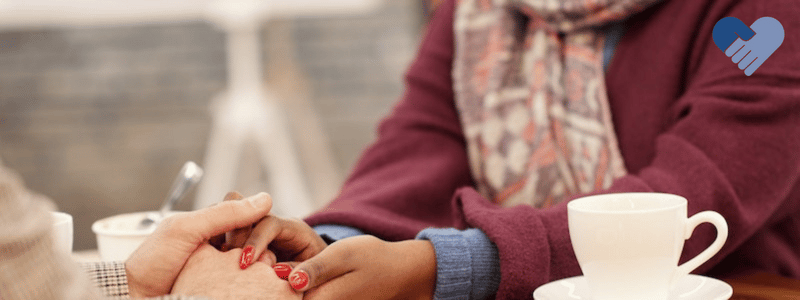Search by category, archive or keyword

Fear is an emotion that often paralyzes families and substance users. Anger is always a result of fear in some way, shape, or form.
Many people, mostly men, disagree. They are often unable to see the connection between fear and anger. They immediately want to defend that they are not scared or fearful. Often, the anger that originates from fear is when the ego or self-esteem is threatened.
Fear that prevents families from intervention can originate from many different places. Some common fear-based reasons for inaction are the fear of the unknown, fear of losing one’s purpose as the substance user’s caretaker, and fear of what will be given up if the substance user gets better. It is true, although most people do not see it or want to believe it.
For families of substance users, the number one reason they don’t intervene is fear of what will happen to them if they do. If they say no, they will be mad at me, and if they say yes, how will I handle things if they get better and I am no longer needed?
Codependency needs are largely, in part, to blame for allowing things to remain the same. If the substance user gets well, the Martyr is no longer a victim, the primary enabler is no longer needed, the hero is no longer the overachieving perfectionist, etc. The list goes on. If none of this family dysfunction existed, there would not be enough treatment centers and addiction professionals to handle the influx of admissions.
Families either directly or indirectly keep things the same for fear of the outcome. Can you think of any other medical problem or condition in which the approach of inaction would be considered the best solution?
What Are Examples of Enabling?
There are obvious examples of enabling and not-so-obvious reasons. Then there is the “why” of enabling. It is obvious the sky is blue, everybody knows that. It is another to understand why the sky is blue.
The point is we all know that providing financial resources, housing, etc. is detrimental to the substance user. Nobody disputes that, not even the biggest enablers. It is the more subtle enabling and the reasons for it that we need to explore:

- Believing nothing can be done unless they want help or hit bottom: For an enabler, this is exactly what they need to believe to justify their actions. Following this advice destroys the substance user and the family watching. When heavy enabling is involved that is preventing the substance user from wanting help or feeling their bottom, you might as well tell someone to stand on a piece of paper and pick it up at the same time. That is the equivalent of telling an enabler to wait for things to happen as they are preventing things from happening.
- Resenting the addict or alcoholic: We could write a book on this one action alone. Unbeknownst to families, the resentments are mostly with the primary enabler. When the primary enabler puts all their energy, efforts, and attention into the substance user, this takes away from other family members. As a result, family members form unhealthy family roles along with maladaptive behaviors and coping mechanisms in an attempt to attract the primary enabler’s attention. The unhealthy family members all blame the addict when deep down inside, their resentments are equally as strong towards the primary enabler. The addict, in theory, is acting out their resentments towards the primary enabler or parental unit with substance use. The other family members are doing the same thing, and their drug of choice is the role they take on, such as hero, scapegoat, lost child, and mascot to cope with the resentment towards the primary enabler.
This is why do-it-yourself interventions or interventions that only have someone provide a motivational speech to the addict or alcoholic are ineffective. They may get them into treatment, and they do not fix what is broken with the family system, which largely contributes to the increasing problems.
- Blaming other people, places, and things for the addict’s downfall: Blaming other things as the reason for the addict’s problems allows them to remain a victim. It also diverts energy into trying to fix the symptoms of the substance use rather than the cause of it, which is the addict’s behavior and perception. When blaming “the other person” for your loved one’s problems, remember that family is blaming your loved one for their addict’s problems. The recovery process starts with the addict or alcoholic taking accountability for their actions.
When the primary enabler or others within the family system disable the substance user’s ability to be held accountable by making excuses for them, it prevents the substance user from seeing how their behaviors are the problems that need to be addressed.
Almost all enabling behaviors, including those listed above, can be linked back to fear. For families and substance users, the fear of change and the unknown outcome is behind many maladaptive behaviors that formulate in an attempt to cope with the situation.
Once these coping skills and behaviors are formed, they are hard to let go of. Any mention of change by a professional is often met with anger driven by fear as a result; ego and intelligence are threatened.
Families of substance users, unfortunately, get comfortable with their uncomfortable situation and their ineffective solutions. The mere mention of the science behind how the family shifts to balance out the dysfunction is often met with swift denial and resistance to the concepts.
What Happens After an Enabler Stops Enabling?
If you ever want to know why a family resists changing, you only have to look at their behaviors after they do. Our greatest challenge as interventionists is not addressing the substance user; that is the easy part. Almost all of our time is spent working with the family after their loved one accepts help and goes to treatment.
When we remove the addict or alcoholic from the dysfunctional family system, that family system goes into a tailspin. They often struggle with the loss of control and the silence afterward.
The primary enabler does not know what to do now that someone else is taking care of their loved one. At the same time, the other family members do not know how to process their feelings and emotions now that the addict or alcoholic is no longer there to blame.
As the family starts to rebalance itself, several aftershocks will occur. The most common are family members coming at us from all angles with a list of complaints. Families of the substance user have been so accustomed to chaos and drama they are unable to help themselves from recreating it with the interventionist and the treatment center.
So what happens after the enabler stops enabling? The family has difficulty healing itself and inevitably causes chaos and drama in an attempt to divert attention from their personal struggles. They continue to blame others rather than realize the problem is much bigger than just a family member using drugs or alcohol.
Until the family takes charge of their own recovery and seeks guidance and professional help, they are susceptible to the vicious cycle of addiction and family dysfunction that enables it.
Do’s and Don’ts of Enabling
Every situation is as similar as it is different. In regards to enabling, here are some common denominators. We suggest the family of a substance user consider the following:
Do
- Set Boundaries and hold the addict accountable: Part of healthy family recovery is detaching from the enabling that contributes to further alcohol and drug use. It is ok to love the addict, it is not ok to not love yourself while helping them stay sick. People do not fix problems they don’t have. When you enable, you disable the addict’s ability to see the problems and the need to change them. Enabling prevents the substance user from moving out of the contemplation stage. The contemplation stage is where the substance user is able to see the benefits of seeking help outweigh the benefits of staying the same.
- Support Recovery Efforts: You can support addiction recovery efforts while detaching and setting boundaries. The goal is to stop watching their lips and start watching their feet. Talk is cheap and is often followed by broken promises. The word decision is not a verb, it is a noun. A decision is only a decision and needs to be followed with action. You can support recovery efforts when they are in recovery. We suggest you do not support potentially broken promises of recovery efforts that are often followed by high hopes and more letdowns.
- Allow Consequences: At no time do we encourage proactively ruining the substance user’s life. They will, unfortunately, do that to themselves if they continue using substances. We suggest that while accepting their decision not to take action and seek help, you can ask them to respect your decision to enable them no longer. Stopping enabling allows consequences to be returned to the rightful owner.
Don’t
- Make Excuses: When you defend your loved one, it can cause problems in many areas. For starters, it allows the substance user to believe they have an ally in the family system and use them to pit them against the others in the family. Secondly, it feeds the substance users justification that they are victims and everything going wrong is not their fault. Thirdly, it allows the substance user to become entitled. Entitlement creates difficulties in the intervention process and makes it far more difficult for them to see the need for change. Lastly, it causes resentment among others in the family. Splitting the family by making excuses for the substance user further damages the already unbalanced and unhealthy family system.
- Take on their Responsibilities: Some things have been proven over time to help the substance user enter recovery. One of these is recognizing the need to do something different during the contemplation stage of change. For the substance user to see the benefits of stopping drug or alcohol use versus seeing the benefits of continuing, they have to have consequences to the latter. Taking on their responsibilities disables this opportunity and only strengthens the substance users’ case to continue their alcohol or drug use. If your loved one chooses to use substances, we encourage you not to help them by taking on their responsibilities.
- Make them Comfortable: Addicts and alcoholics seek escape in their use, and they seek comfort in your enabling. Similar to what was referenced regarding taking on their responsibilities, the addict or alcoholic seldom pursue what they assume is an uncomfortable detox or treatment center in exchange for a comforting home of the primary enabler. And for those whose loved one isn’t living with you, anytime you provide anything by way of comfort, from conversations to finances, you take away the substance user’s ability to feel the consequences needed for change. The substances make them comfortable, and the enabling does too.
- React: This is easier said than done; we understand that. Reactivity is something the substance user needs and wants from you. They are experts at operating in chaos and drama, you are not. Families who drop everything to enable or cosign their loved one’s addiction fuel the ongoing problem. Reactivity doesn’t stop just because they have entered treatment either. Families who have been put through the wringer of the substance user’s chaos and drama know nothing else. They can’t help themselves other than to carry out the behaviors they have become accustomed to. The substance user says something, and the family reacts without fact-checking anything. It is ok to pause and let them know you have to think about it and get back to them. A professional intervention team working with you can help you significantly reduce your reactivity. They can also help you understand why you are reacting.

Contact Family First Intervention
Family First Intervention seeks to help your loved one receive treatment and to create treatment plans for families to support each other and heal together.
Addiction is a family problem, and understanding family systems and why one enables and reacts is a large part of the overall solution. Addiction is not a victimless crime that only affects the person using substances. It affects the family as much, if not more than the addict or alcoholic.
Furthermore, there is one substance user and many more family members with different ideas and views. Each of the family members is affected differently and acts out in different ways. Helping one substance user is far less difficult than helping several different personalities and emotions influenced by the addiction.
We can help with resources, professional assistance, and intervention guidance. Don’t hesitate to contact us if you want to learn more about the intervention process and how we may assist.
An intervention is not about how to control the substance user; it is about how to let go of believing you can.
“The most formidable challenge we professionals face is families not accepting our suggested solutions. Rather, they only hear us challenging theirs. Interventions are as much about families letting go of old ideas as they are about being open to new ones. Before a family can do something about the problem, they must stop allowing the problem to persist. These same thoughts and principles apply to your loved one in need of help.”
Mike Loverde, MHS, CIP




